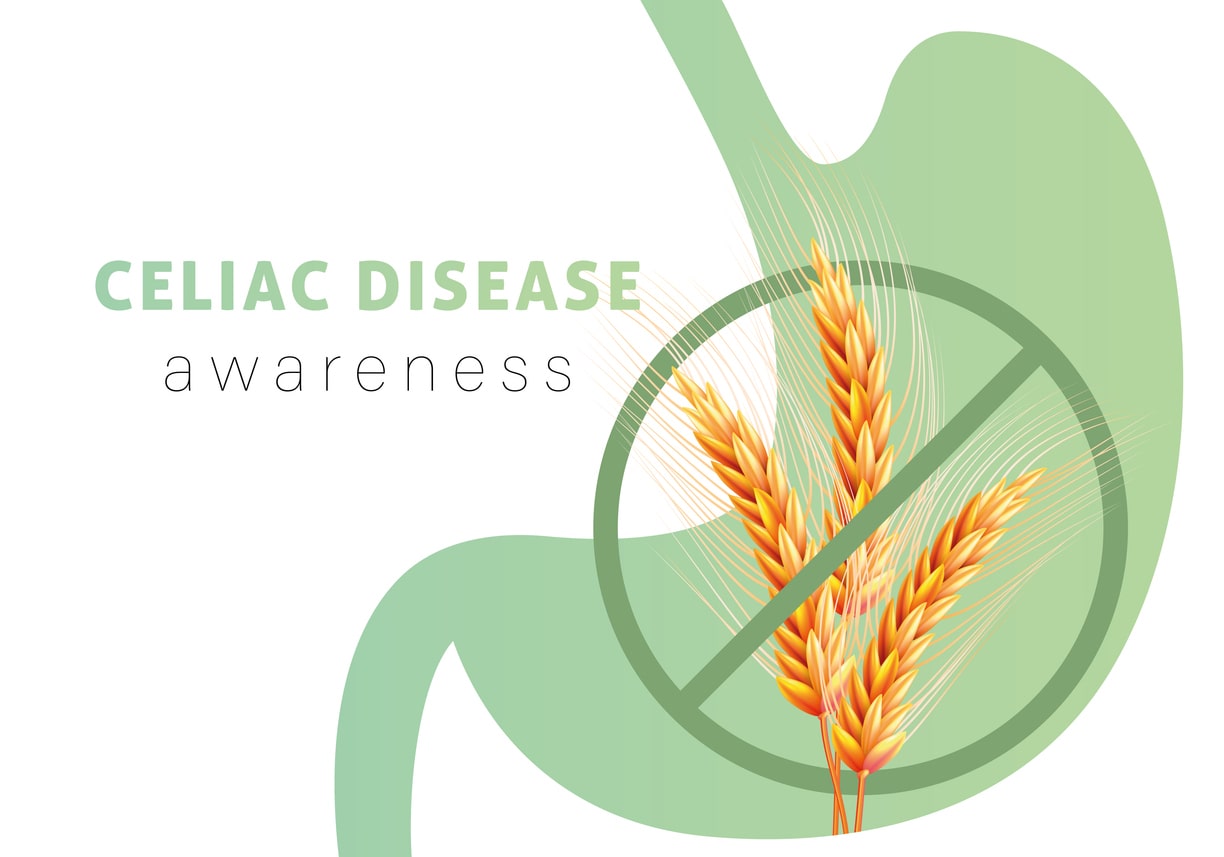
Celiac Awareness Month: What to Eat with Celiac Disease
May is Celiac Awareness Month. For those diagnosed with this autoimmune condition, strict adherence to a gluten-free diet is essential to managing symptoms and promoting overall health. But eating gluten-free doesn’t mean sacrificing flavor or satisfaction. From hearty mains to indulgent desserts, gluten-free eating can be nourishing and delectable, proving that food can be wonderfully enjoyable, even without gluten. Read on to learn about mouthwatering options and helpful tips for those who are gluten-free.
Understanding Celiac Disease
Celiac disease is an immune system response to gluten consumption, a protein found in wheat, barley, and rye. Gluten is a binding agent and provides elasticity to dough, helping it rise and maintain its shape. Gluten offers a chewy consistency for foods like pasta and gives baked goods their desirable structure. When individuals with celiac disease ingest gluten, their body mistakenly attacks the small intestine, leading to inflammation, damage, and an inability to absorb nutrients properly. This can result in a wide range of uncomfortable symptoms, including abdominal pain, diarrhea, bloating, fatigue, and even malnutrition if left untreated.

Embracing a Gluten-Free Diet
To manage celiac disease, you must entirely remove gluten from your diet. Although this may seem daunting due to gluten’s prevalence in many foods, maintaining a gluten-free diet is feasible with the proper understanding and tactics. Consider the following:
- Identify Gluten-Free Foods: The foundation of a gluten-free diet consists of naturally gluten-free whole foods, such as fresh fruits, vegetables, lean proteins, and gluten-free grains like quinoa, rice, and buckwheat.
- Avoid Cross-Contamination: Maintaining a gluten-free kitchen is crucial to prevent cross-contamination, where gluten-containing foods come into contact with gluten-free items. This can be achieved by designating separate cooking utensils, storage containers, and preparation surfaces for gluten-free foods and being mindful of shared condiments and spreads.
- Nutritional Considerations: While a gluten-free diet can be nutritious, addressing potential nutrient gaps is crucial. Gluten-free alternatives often lack essential vitamins and minerals found in fortified wheat products. Combatting this requires focusing on nutrient-rich whole foods like leafy greens, legumes, and gluten-free whole grains.
- Communicate at Restaurants: When dining out, it’s crucial to communicate clearly with the restaurant staff about your dietary needs or restrictions. Request that your meal be prepared in a separate, dedicated kitchen area to minimize the risk of cross-contamination.
- Utilize Gluten-Free Resources: Several organizations, such as Beyond Celiac, offer valuable resources for those with celiac disease. They offer recipes and advice on managing a gluten-free diet while on a budget.

Savor the Flavor: Elevating Gluten-Free Cuisine
With vibrant ingredients and innovative techniques, the following recipes demonstrate that gluten-free dining can be anything but bland.
Breakfast:
- Gluten-free Avocado Toast: Spread mashed avocado on toasted gluten-free bread and top with sliced tomatoes, a sprinkle of feta cheese or goat cheese, and a drizzle of balsamic glaze. This simple yet delicious breakfast is loaded with healthy fats, vitamins, and minerals, making it a satisfying and nutritious way to start your day.
- Gluten-free Banana Pancakes: Mash ripe bananas and mix with eggs, almond flour, baking powder, and a pinch of cinnamon. Cook spoonsful of batter on a hot griddle until golden brown. Serve with maple syrup and fresh fruit.
- Greek Yogurt Parfait: Layer Greek yogurt with fresh berries, sliced bananas, and gluten-free granola for a nutritious and satisfying breakfast packed with protein, fiber, and vitamins.
- Smoothie Bowl: Blend frozen mixed berries, banana, spinach, and your choice of milk until smooth. Pour the smoothie into a bowl and top with gluten-free granola, sliced fresh fruit, shredded coconut, and a dollop of nut butter for a refreshing and nourishing breakfast.
- Vegetable Frittata: Whisk together eggs with diced vegetables such as spinach, bell peppers, onions, and mushrooms. Pour into a greased skillet and cook until set. Finish under the broiler until the top is golden brown.
Lunch:
- Chickpea and Avocado Wrap: Mash chickpeas with avocado, lemon juice, salt, and pepper to make a creamy filling for gluten-free wraps. Add sliced cucumbers, shredded carrots, and mixed greens, then roll up the wraps for a flavorful and filling lunch on the go.
- Greek Salad with Grilled Shrimp: In a bowl, combine chopped lettuce, tomatoes, cucumbers, red onions, olives, and feta cheese. Top with grilled shrimp seasoned with olive oil, lemon juice, and oregano.
- Grilled Chicken with Roasted Vegetables: Marinate chicken breasts in olive oil, garlic, and herbs, then grill until cooked. Serve with a side of assorted roasted vegetables, such as bell peppers, zucchini, and carrots.
- Quinoa salad with Mixed Vegetables: Cook quinoa according to package instructions and let it cool. Toss with chopped cucumbers, cherry tomatoes, diced bell peppers, and fresh herbs like parsley and mint. Dress with olive oil, lemon juice, salt, and pepper.
- Rice Paper Spring Rolls: Fill rice paper wrappers with cooked shrimp or tofu, vermicelli rice noodles, shredded carrots, cucumber strips, fresh herbs like mint and cilantro, and lettuce. Serve with a side of gluten-free peanut or hoisin sauce for dipping.
Dinner:
- Baked Salmon with Sweet Potato Mash: Season salmon fillets with salt, pepper, and lemon juice, then bake until flaky. Serve alongside mashed sweet potatoes made with butter, milk, and a touch of cinnamon.
- Gluten-free Pasta with Marinara Sauce: Look for gluten-free pasta varieties made from rice, quinoa, or lentils. Cook the pasta according to package instructions and serve with a homemade marinara sauce made from tomatoes, garlic, onion, and herbs.
- Mediterranean Stuffed Eggplant: Halve eggplants and scoop out the flesh. Fill the eggplant shells with a mixture of cooked quinoa, diced tomatoes, olives, feta cheese, and fresh herbs. Bake until the eggplants are tender and the filling is heated thoroughly.
- Stir-fried Tofu with Vegetables and Rice: Cube tofu and stir-fry with your favorite vegetables, such as broccoli, snow peas, and mushrooms. Season with gluten-free soy sauce or tamari, ginger, and garlic. Serve over cooked rice.
- Stuffed Bell Peppers: Fill halved bell peppers with a mixture of cooked quinoa, ground turkey or beef, diced tomatoes, black beans, corn, and shredded cheese. Bake until the peppers are tender and the filling is heated thoroughly for a hearty, gluten-free dish.
Dessert:
- Flourless Chocolate Cake: This rich and decadent dessert is made with chocolate, eggs, sugar, and butter. It is naturally gluten-free and perfect for chocolate lovers.
- Fruit Sorbet: Cool and refreshing, fruit sorbets made with fresh fruit, sugar, and water are naturally gluten-free and a light option for dessert.
- Gluten-free Brownies: Dense, fudgy, and utterly indulgent, gluten-free brownies can be made with almond flour, coconut flour, or a gluten-free flour blend.
- Gluten-free Chocolate Chip Cookies: Mix gluten-free flour blend, brown sugar, white sugar, butter, eggs, vanilla extract, and chocolate chips. Place dough onto a baking sheet and bake until golden brown.
- Macaroons: Chewy on the inside and delicately crispy on the outside, macarons are made with almond flour, egg whites, sugar, and vanilla extract, with endless possibilities for flavor variations.
Contact Us
Gluten-free cooking has endless possibilities, from vibrant salads to satisfying dinners and indulgent desserts. With the right ingredients and recipes, you can create delicious meals that satisfy your cravings and nourish your body. Whether you’re craving comforting classics or innovative flavors, there’s something for everyone to enjoy while maintaining a gluten-free lifestyle.
For expert guidance and support in managing gluten-related conditions or celiac disease, contact Gastroenterology of Greater Orlando and discover how we can help you navigate your diagnosis.